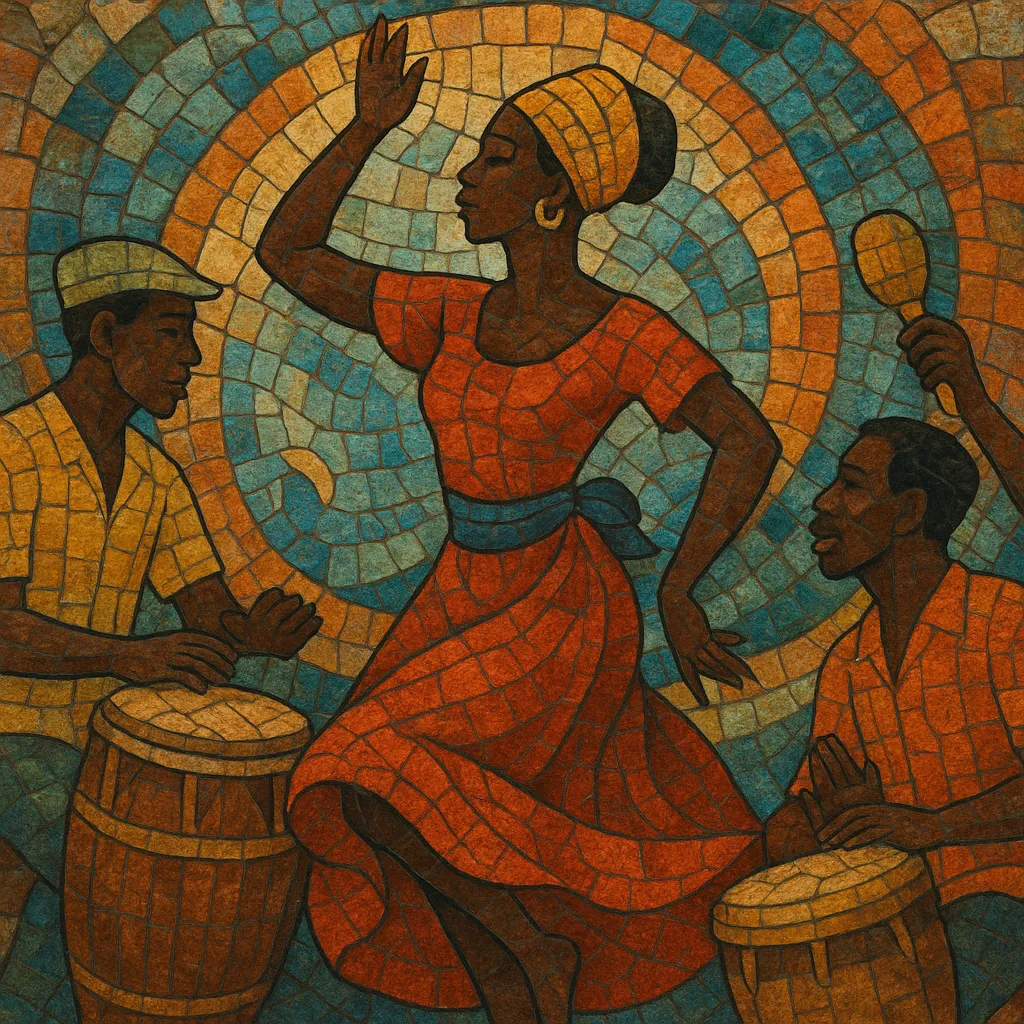Bomba is an Afro‑Puerto Rican drum‑dance tradition that emerged among enslaved Africans and their descendants on the island’s coastal plantations and port towns.
It centers on a vibrant dialogue between a solo dancer’s improvised moves and a lead drum that answers each gesture in real time, supported by a steady ensemble groove, call‑and‑response singing, and communal chorus.
The core ensemble uses barrel drums (barriles) made from rum barrels: a buleador (or segundo) that maintains the ostinato and a subidor/primo that improvises to the dancer. Musicians also play cuás (wooden sticks on the drum’s shell) and a single maraca, typically held by the lead singer. Bomba includes several regional rhythms—such as sicá, yubá, cuembé, and holandés—each with its own tempo, swing, and dance vocabulary.
Beyond entertainment, bomba has functioned as a vehicle for resistance, social commentary, and community identity, and today it thrives in both Puerto Rico and its diasporas, often fusing with jazz, salsa, and contemporary popular styles.
Bomba arose in the late 17th and early 18th centuries in Puerto Rico’s sugar and coffee plantations and coastal towns such as Loíza, Santurce, Ponce, and Mayagüez. Enslaved Africans from Akan, Kongo, and Yoruba cultural spheres brought drum‑dance practices that blended with Spanish colonial song repertories (e.g., copla/décima) and Indigenous Caribbean elements. These gatherings served as social release, coded communication, and a means of cultural survival under slavery.
Through the 19th century, bomba flourished at communal events, often at bateyes (courtyards). Regional variants and rhythm families (sicá, yubá, cuembé, holandés, and others) developed distinct feels and dance vocabularies. Despite periods of stigmatization and policing, the tradition persisted in Afro‑Puerto Rican communities, carried by families and local ensembles.
From the 1940s onward, culture bearers—foremost the Cepeda and Ayala families—brought bomba to theaters, schools, and recordings. Rafael Cepeda was widely recognized as a patriarch who helped institutionalize teaching and performance. Popular dance bands and singers (e.g., Cortijo e Ismael Rivera) incorporated bomba patterns into mainstream Afro‑Caribbean music, laying groundwork for later salsa arrangements.
Bomba experienced a resurgence in Puerto Rico and the diaspora (New York, Chicago, and beyond) through community organizations, workshops, and ensembles (e.g., Los Pleneros de la 21, Paracumbé, Viento de Agua). Contemporary artists have fused bomba with jazz, salsa, hip‑hop, and reggaeton while maintaining the tradition’s core: dancer‑drummer dialogue, communal chorus, and polyrhythmic drive.
Build a cyclical ostinato on the buleador in duple meter (often felt in 2/4 or 4/4), leaving space for off‑beat accents and micro‑timing push‑and‑pull.
•Choose a rhythm family to shape tempo and feel:
•Sicá: medium tempo, driving and accessible.
•Yubá: slow, heavy, introspective, with spacious primo replies.
•Cuembé: sensual swing, nuanced off‑beats.
•Holandés: brisk, festive, with energetic footwork cues.
•Avoid forcing a Cuban clave; bomba has its own internal timeline defined by cuás patterns and the dancer‑drum conversation.


